Winter cycling clothes can make heading out in the cold a less daunting prospect. With layers and accessories that’ll keep you warm and fend off bad weather, you can make the most of the cooler months and put in the base training for a great summer.
However, with the wrong kit, you may end up cold, wishing you’d stayed home and stuck to the turbo trainer.
Fortunately for you, we review loads of winter cycling clothing each year here at BikeRadar and you can be sure we’ve headed out in the cold to find the best options on the market.
Below, we explain everything you need to know about winter gear and recommend the best winter cycling clothes, based on our impartial testing.
Winter cycling jackets
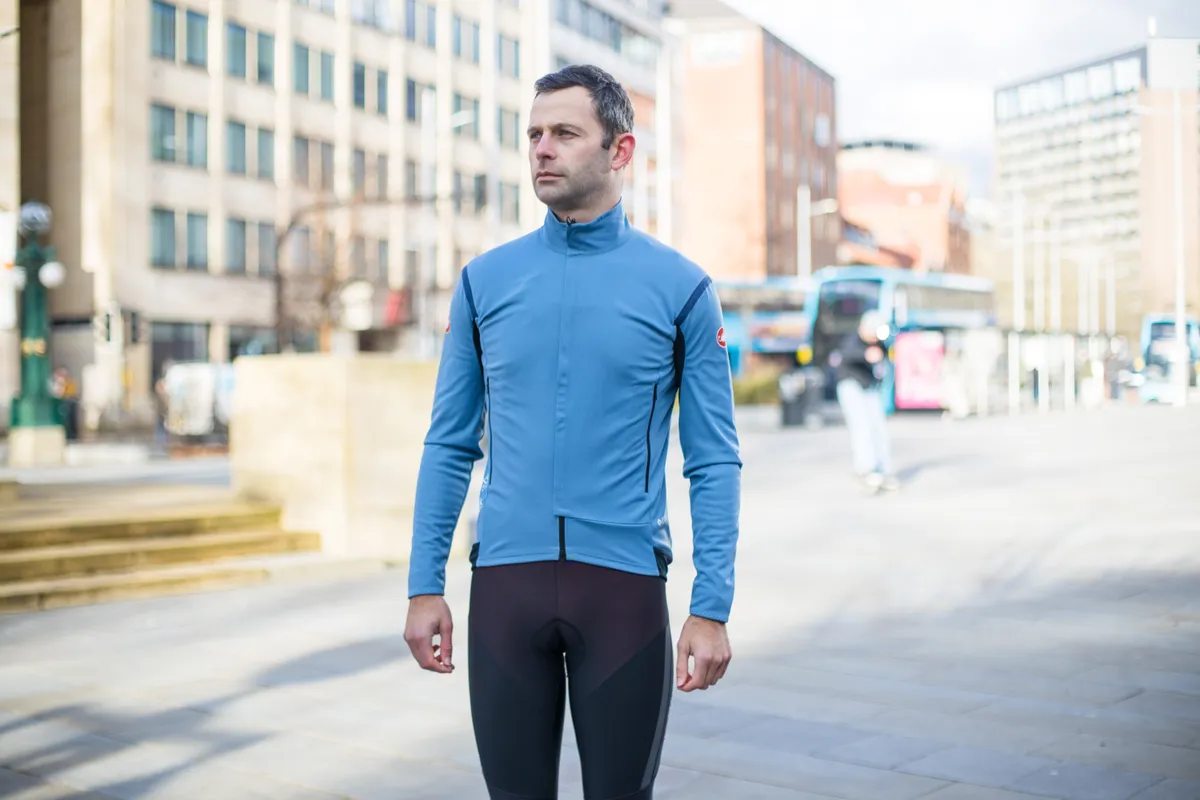
Winter cycling jackets are divided into hardshells and softshells.
Hardshells are waterproof and windproof but uninsulated. As a result, most cyclists prefer softshells for winter cycling because they are windproof, insulated and usually more breathable. They often have a DWR treatment to help deflect lighter rain showers.
Castelli has an impressive range of winter cycling jackets. Its Alpha range has a separate insulating layer below a water- and wind-resistant shell, so you can unzip the outer without losing insulation.
The Alpha jacket is available at different weights and we’d recommend the Castelli Alpha RoS 2 Light, Castelli Alpha Doppio RoS or Castelli Alpha Ultimate.
A less pricey option is the Endura Pro SL Waterproof Softshell jacket. As its name suggests, it’s more water resistant – but less warm – than most softshell jackets.
SQUIRREL_PLAYLIST_10155110
Long-sleeve jerseys
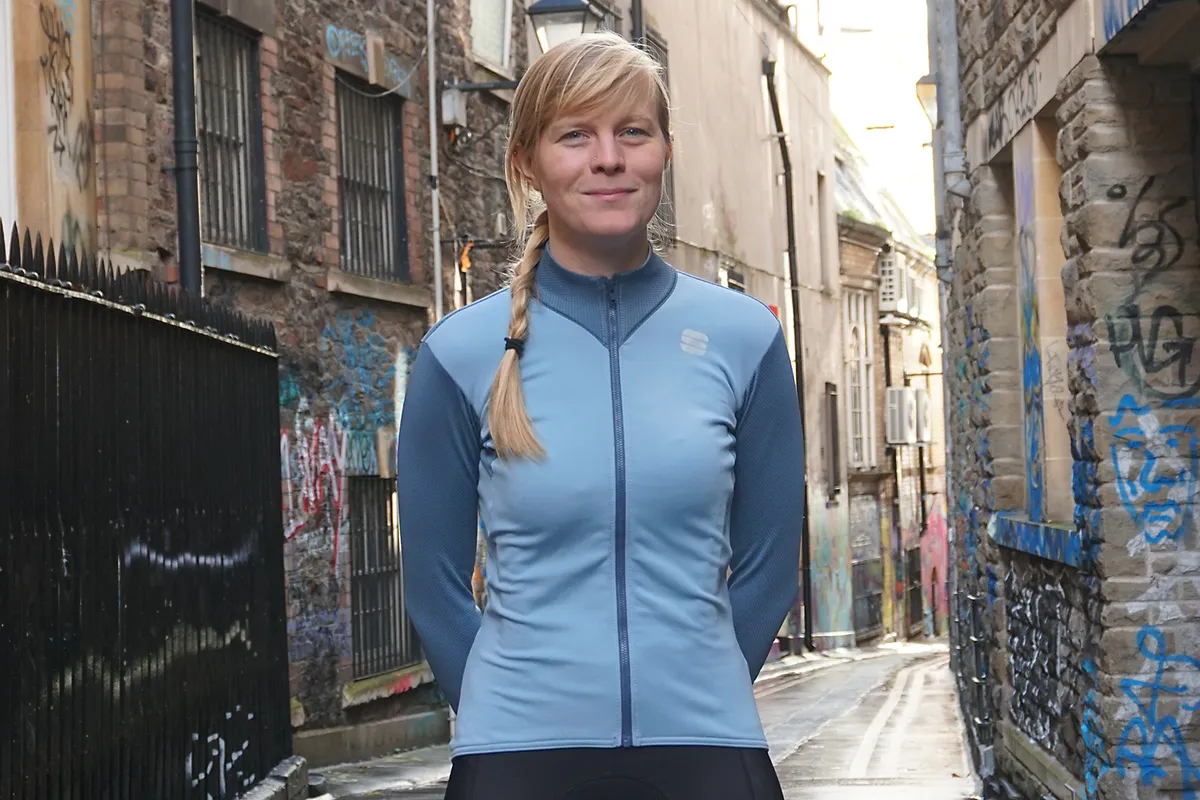
Mid-layers have largely gone out of style, with cyclists usually now pairing a baselayer with an insulated jacket. But a long-sleeved jersey can add warmth on the coldest rides when sandwiched between a baselayer and jacket.
It can also be worn as a top layer on milder days, although a piece that can act as a mid-layer may not be windproof enough to be worn comfortably on top.
The Rapha Pro Team Gore-Tex Infinium jersey is windproof, although we didn’t find it very water-resistant and it was good only for short, high-intensity rides.
The Sportful Kelly women’s jersey is another mid-season jersey that does the basics well and could serve as a mid-layer.
SQUIRREL_PLAYLIST_10155111
Baselayers
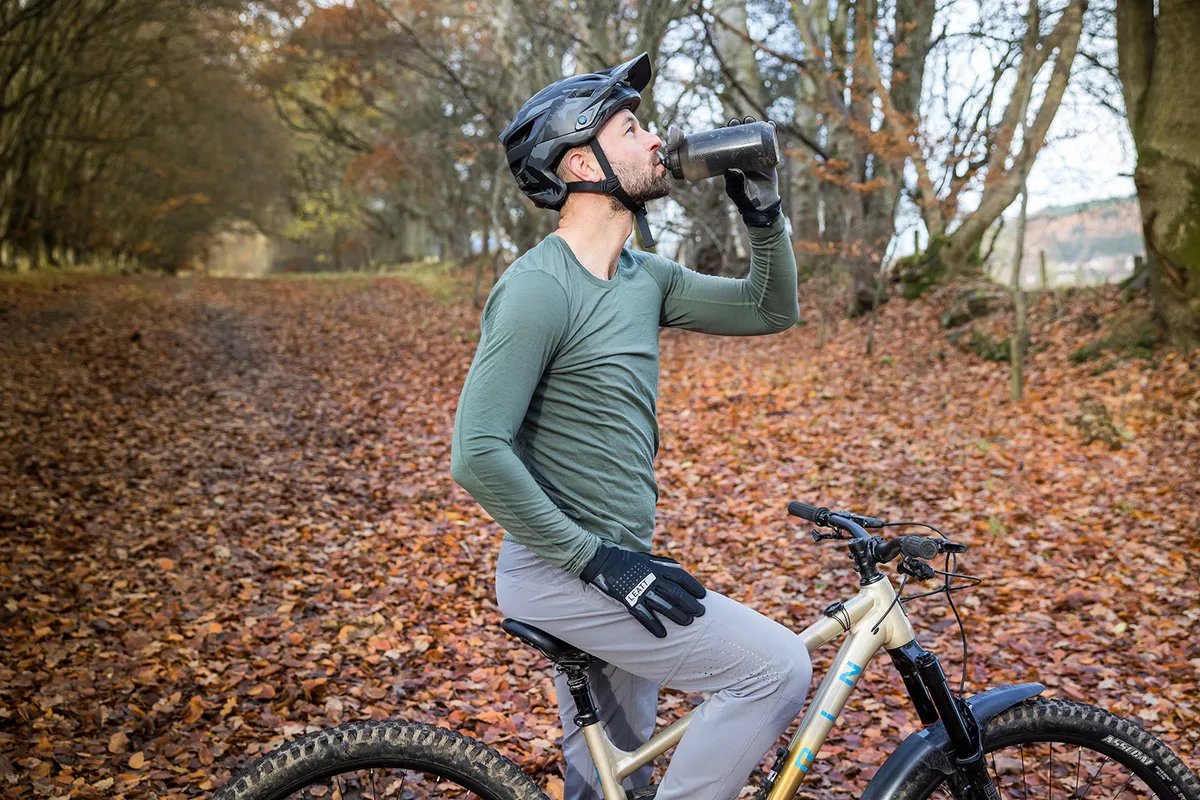
A quality long-sleeved baselayer is fundamental to ride comfortably in cold weather. Your baselayer needs to add insulation and warmth, but also wick away sweat to keep your skin dry and prevent chills. It needs to be close-fitting to work efficiently.
The best winter baselayers are often made of polyester or polypropylene. Merino wool is also a great choice thanks to its odour resistance and luxury feel.
We gave the Craft ADV Warm Fusenet Intensity a five-star rating, with our reviewer praising its thickness, high neckline that keeps out draughts and body mapping for comfort.
Another five-star choice is the Giro Chrono. Lighter than the Craft, we found it worked well across conditions and ride intensities. There’s enough stretch for a comfortable, close fit.
We also rated the Gore M Windstopper baselayer at five stars. As its name says, it uses Windstopper front panels, but it still offers efficient wicking and extra comfort on the coldest days.
SQUIRREL_PLAYLIST_10155119
Cycling gilets
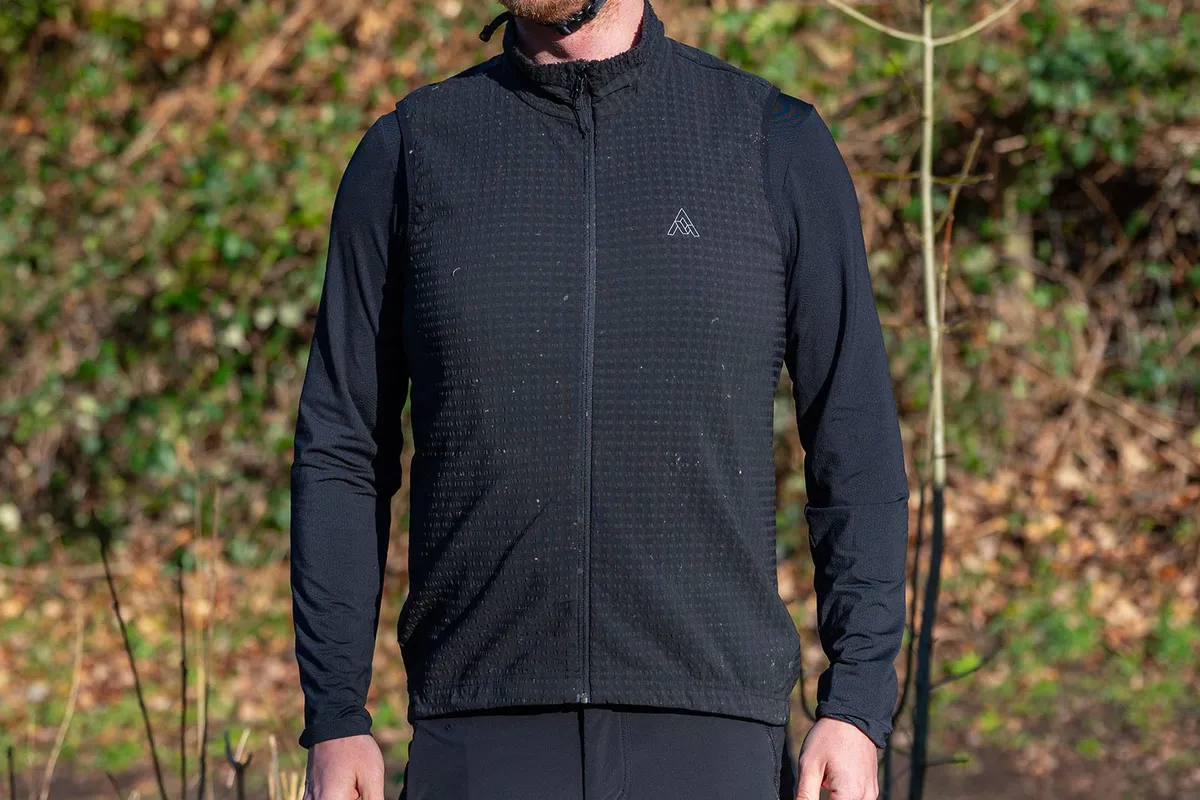
Many of the best cycling gilets are designed to be packable, making them a great choice if you’re riding in slightly milder conditions – or it looks likely to warm up during the day. They keep your core warm but allow much more airflow than a jacket.
The 7mesh Chilco Vest is a top pick. It has a stretchy outer surface with a pile interior for warmth, without getting too hot or damp, although it’s low on added features.
A more insulated option is the Altura Esker Dune gilet. It sacrifices packability for extra warmth and water resistance, and has a zipped front pocket.
SQUIRREL_PLAYLIST_10155121
Bib tights

Once you have taken steps to keep your core warm and nail your layering, the most important part of your winter cycling kit is good leg protection. This normally takes the form of bib tights.
The best winter bib tights are typically made from fabric with a brushed-fleece backing. Some will be DWR-coated while others will include a membrane, although this can make the fabric stiff, which can be uncomfortable when pedalling for longer periods.
The Altura Icon Thermal bib tights are a top pick. They’re not expensive and have plenty of features, including thick insulation, a good seat pad and a pocket at the hip.
Another full-featured pair of winter bib tights is the Endura FS260-Pro Thermo II. They have great insulation, are DWR-coated to repel water, and have high front and rear panels to overlap with your top-half layers.
Katherine Moore recently tested women’s bib tights for BikeRadar. She awarded the Castelli W DT Espresso Bibtights a full five stars, describing them as fantastic all-rounders with a great fit and a comfortable chamois. She also praised the Rapha Core Winter Tights for their excellent value.
SQUIRREL_PLAYLIST_10155130
Winter gloves

Gloves are an essential part of your winter armoury.
The best winter gloves are insulated and windproof. They will include some water resistance while being breathable to stop your hands from getting sweaty. The insulation is usually mostly on the backs, because you need your palms to be free to grip the bars and use your controls.
The Endura Deluge gloves offer excellent insulation and water resistance, thanks to a waterproof membrane. We found that the grip was good too, thanks to thinner palms with silicone grippers.
GripGrab specialises in protecting your extremities, and its mid-weight Windster 2 gloves provide good insulation and windproofing in a non-bulky design – although they’re not fully waterproof.
Pearl Izumi's AmFib Lite gloves also scored well in our review. They have a long cuff – another important feature to look for in winter cycling gloves – as well as low-bulk insulation and thin palms.
SQUIRREL_PLAYLIST_10155137
Caps

The adage that you lose 30 per cent of your body heat through your head may have been debunked, but keeping your head and ears warm can still make a huge difference when cycling in the cold.
We don’t have a buyer’s guide to winter cycling caps, nor recent reviews, but look for a low-bulk design that can fit under a cycling helmet and cover your ears.
Castelli has a range of options, including the Estemo WS Skully. Gore, too, has headwear with various levels of warmth, with the Essence Light Beanie a good option if you want a lighter piece. Rapha’s range includes the Gore-Tex Windstopper Thermal cap.
Socks
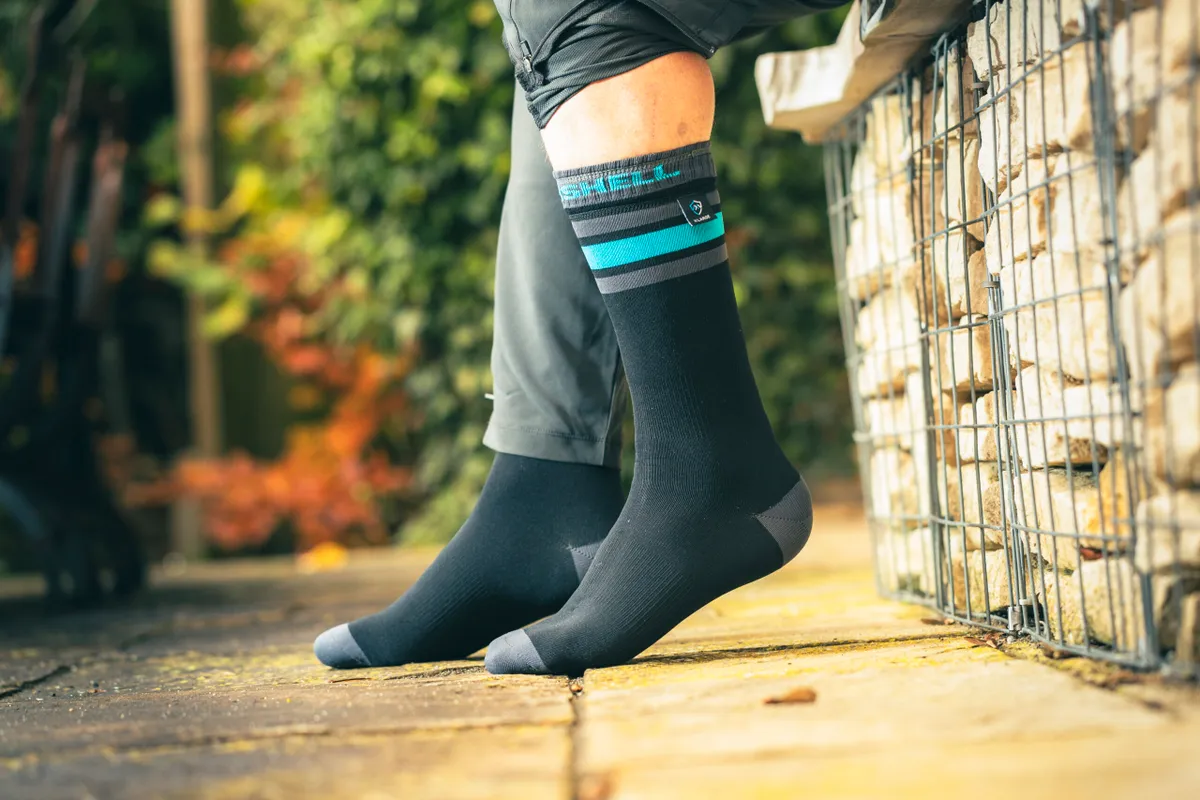
A quality pair of warm socks will go a long way towards keeping your feet warm. Wool socks will stay warm even when wet, and waterproof socks are also an option for wet-weather riding.
The Endura Baa Baa Merino socks are a quality choice at a lower price, while Le Col's Tech Wool socks include 50 per cent Merino wool for warmth.
If you want water-resistance, the DexShell Ultra Dri Sport socks performed well in testing for their warmth and water-resistance.
SQUIRREL_PLAYLIST_10155146
Overshoes

The best cycling overshoes will keep your feet warm and dry. However, they’re prone to wear, particularly from scuffing against the cranks and if you walk in them much.
Among the overshoes we’ve tested, the Castelli Diluvio ULs provide a high cuff and good insulation. Our reviewer praised their ease of entry and reflective details, although he found they let in water at the bottom.
Another quality option is the DexShell Heavy Duty Overshoes. They’re warm but will wet out in prolonged rain storms.
We also rated the Shimano S3100R NPU+ overshoes for their substantial build and damp-condition performance, although with limited breathability we found our feet getting sweaty when the weather was less cold.
SQUIRREL_PLAYLIST_10155147
Winter cycling shoes
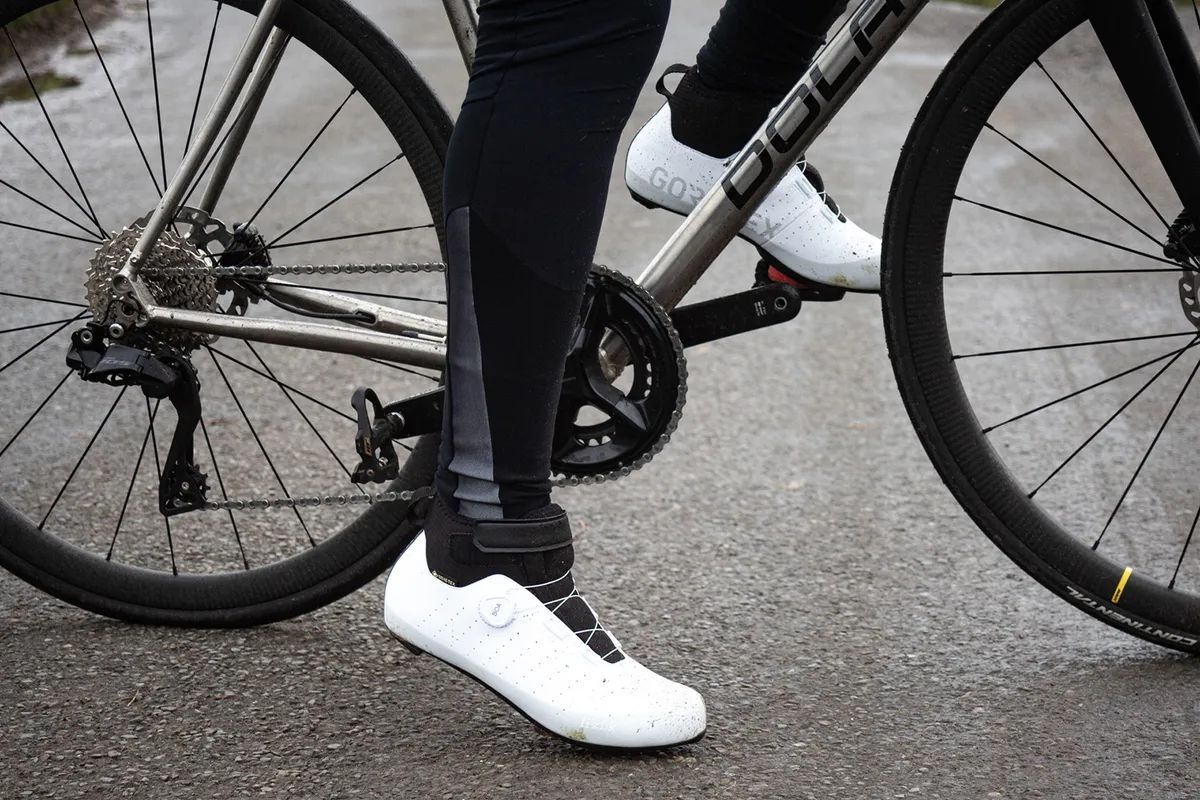
If you’re serious about winter riding, you might want to invest in a pair of dedicated winter cycling shoes.
Unlike typical cycling shoes, these have built-in insulation and membranes to keep your feet dry while letting water vapour out. They often extend further up your ankle for extra warmth and protection.
We rated the Fizik Artica X5s highly. They’re weatherproof and have a grippy sole, even if that means they’re on the heavy side.
Alternatively, the Leatt 7.0 HydraDri shoes are designed for flat-pedal use, and offer decent comfort and breathability.
The Northwave Kingrock Plus GTX shoes are designed for SPD cleats, include a Gore-Tex membrane and have enough insulation for cooler rides.
Read our guide to the best winter cycling shoes for more options.
SQUIRREL_PLAYLIST_10155151
